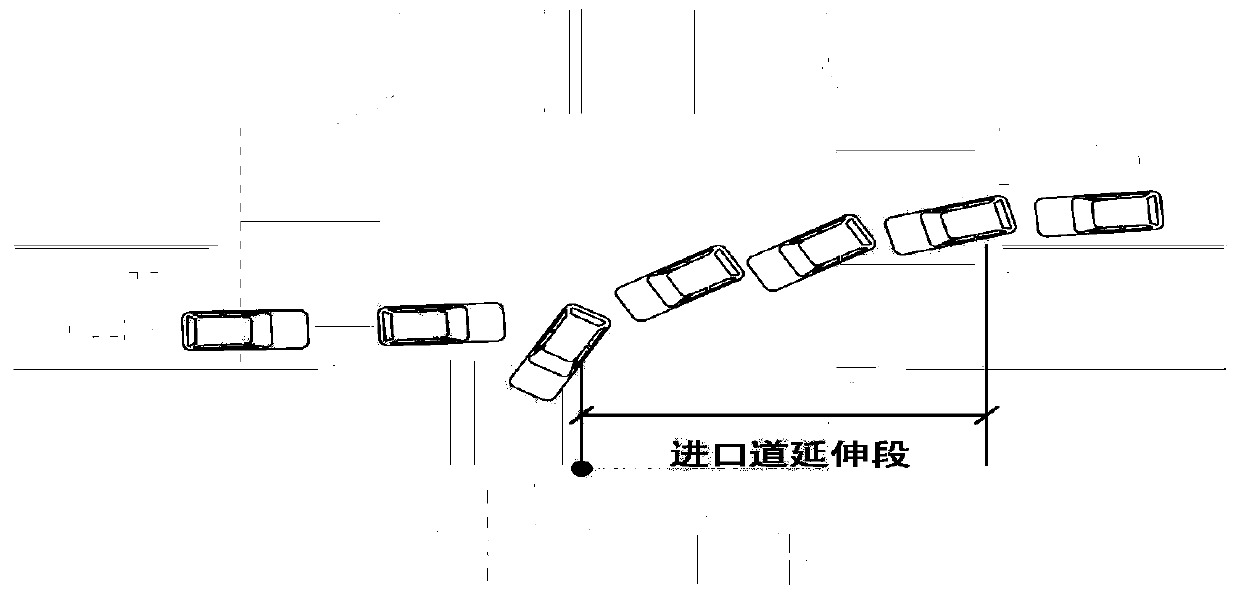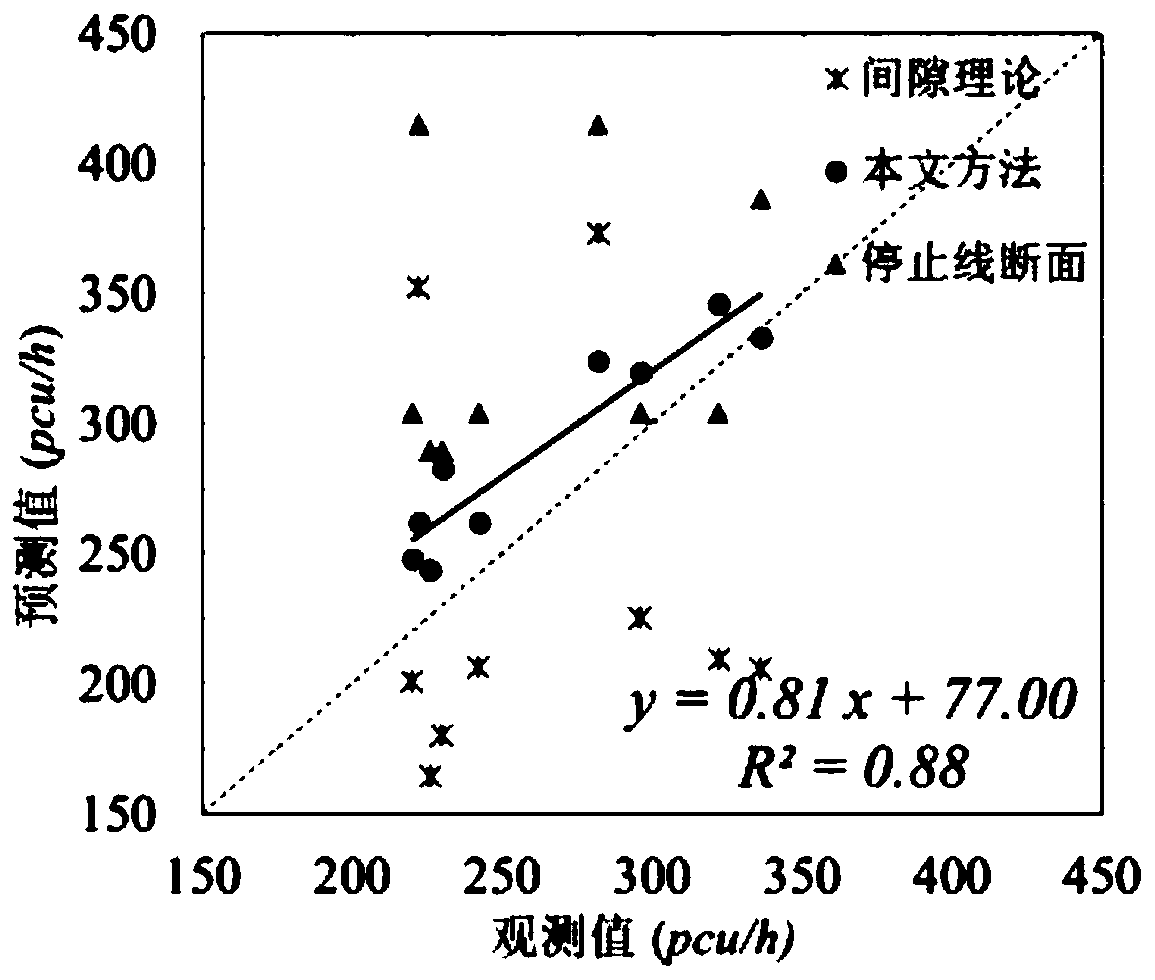Method for calculating traffic capacity of left-turn lane under left-turn allowable phase
A technology of traffic capacity and left-turn lane, which is used in traffic control systems of road vehicles, traffic flow detection, traffic control systems, etc.
- Summary
- Abstract
- Description
- Claims
- Application Information
AI Technical Summary
Problems solved by technology
Method used
Image
Examples
Embodiment Construction
[0115] The technical solutions in the embodiments of the present invention will be clearly and completely described below. Obviously, the described embodiments are only some of the embodiments of the present invention, but not all of them. Based on the embodiments of the present invention, all other embodiments obtained by persons of ordinary skill in the art without making creative efforts belong to the protection scope of the present invention.
[0116] A method for calculating the traffic capacity of left-turn lanes under the phase of left-turn permission
[0117] Step 1: Collect basic data
[0118] (1) Measure the length L of the extension section of the entrance of the intersection whose traffic capacity is to be calculated ex (m)
[0119] The length of the extension section of the inlet channel L ex It refers to the distance from the left-turn stop line to the opposite lane dividing line of the left-turn exit lane, such as figure 1 Shown:
[0120] (2) Collect the si...
PUM
 Login to View More
Login to View More Abstract
Description
Claims
Application Information
 Login to View More
Login to View More - R&D
- Intellectual Property
- Life Sciences
- Materials
- Tech Scout
- Unparalleled Data Quality
- Higher Quality Content
- 60% Fewer Hallucinations
Browse by: Latest US Patents, China's latest patents, Technical Efficacy Thesaurus, Application Domain, Technology Topic, Popular Technical Reports.
© 2025 PatSnap. All rights reserved.Legal|Privacy policy|Modern Slavery Act Transparency Statement|Sitemap|About US| Contact US: help@patsnap.com



